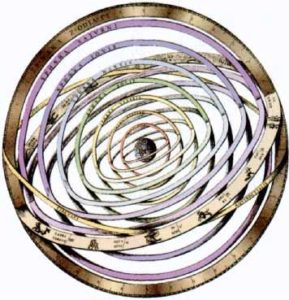In the last article we talked about how playing in tune is not about placing your finger in the right place, according to some authority (like your electronic tuner), but about the relationship of notes (and fingers) to each other. Here we’re going to help your hand find a natural position so you can play in tune. If your hand is in an awkward position, intonation can be hit-or-miss. Next time we’ll take a look at games/exercises for building good intonation relationships into your hand and ears.
Note: I have to summarize the exercises below because a full verbal explanation of physical motions can be boring and out of context if not applied to you in a personal way, as in a lesson. I’ll be referring to some technique videos on this site, which give more info both visually and verbally. They also allow you to play along and not have to think too much (a big plus!).
 Basic setup for good intonation. The Drumming exercise (#7 in Technique Video Group 1) is excellent for players of all levels, helping your hand teach itself a good position for accurate and effortless playing. With the drumming exercise, your hand starts in an easy-to-reach position, holding the fiddle like a guitar, and drums on a string as easily as you would effortlessly drum fingers on a table while waiting for someone. In fact, having your mind focused on something else is a big part of this game. Start by tucking the violin into your left thumb, instead of the other way around, so that your hand can avoid preconceptions about how it should approach the neck of the violin. The game is to slowly transfer that drumming up to playing position, using only your right hand to do the moving, allowing your left shoulder, elbow and wrist to slowly accommodate your hand and arm in a way it finds natural.
Basic setup for good intonation. The Drumming exercise (#7 in Technique Video Group 1) is excellent for players of all levels, helping your hand teach itself a good position for accurate and effortless playing. With the drumming exercise, your hand starts in an easy-to-reach position, holding the fiddle like a guitar, and drums on a string as easily as you would effortlessly drum fingers on a table while waiting for someone. In fact, having your mind focused on something else is a big part of this game. Start by tucking the violin into your left thumb, instead of the other way around, so that your hand can avoid preconceptions about how it should approach the neck of the violin. The game is to slowly transfer that drumming up to playing position, using only your right hand to do the moving, allowing your left shoulder, elbow and wrist to slowly accommodate your hand and arm in a way it finds natural.
If you can keep your fingers free to move and not squished against the neck of the violin or held too low Continue reading Playing in Tune 2: the Hand
